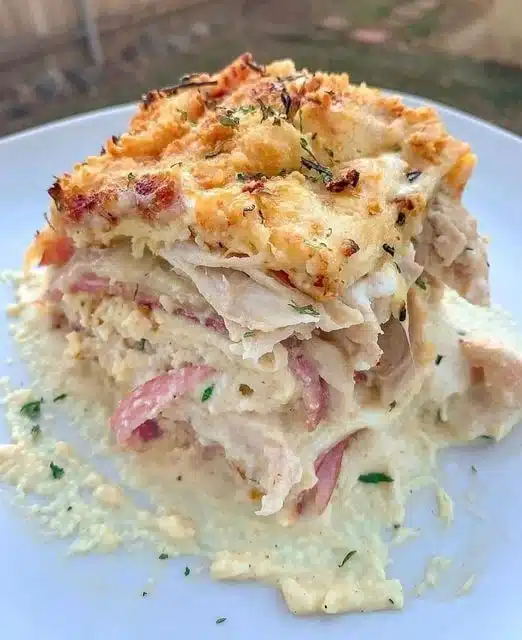Gluten Free English Muffins Recipe
These are THE BEST gluten free English muffins you’ll ever try – and they’re super easy to make! They’re deliciously soft with all the nooks and crannies you’d expect from a proper English muffin. The dough handles beautifully, you can knead it and shape it without any problems whatsoever, and you can cook them fully on the stovetop, no need to turn on the oven.

What are English muffins?
English muffins aren’t actually muffins… and they also didn’t originate in England. Instead, they’re round, fairly flat yeast-leavened bread that’s a breakfast staple in the US (though they’re sometimes also made with a sourdough starter). What makes them different from many other bread and bun recipes is that they’re cooked on the stovetop instead of in the oven (although some recipes use a stovetop and oven combination).
They were developed in the US by a British ex-pat, Samuel Bath Thomas. They were essentially his twist on the British crumpet, and he trademarked his invention in 1926.
They’re typically served split horizontally in half and you’re not supposed to cut them with a knife. Instead, the easiest way to open them up is to prick the sides with a fork and then pull the two halves apart. This really accentuates all the nooks and crannies in the crumb that English muffins are famous for.
How To Store English Muffins
After you make these from scratch, you will not feel the same about buying them at the store! I like to cover and store them at room temp for 3-4 days. Even better, make a big batch and freeze for them for up to 8 weeks, so you always have them for breakfast and brunch!
Why Is My Dough So Sticky?
No bag of flour is the same from country to country or even town to town. This means, your flour can absorb liquid differently from my flour. So, when making ANY bread doughs you always need to hold back liquid until you get the consistency that I show you.
This is a sticky dough, but it should not be really wet. Watch the video (down below on the page) for a visual reference of the dough.
Is An English Muffin A Muffin Or Bread?
Ok, so these are bread, not a muffin. They were originally called “English” muffins to distinguish them from the sweeter cupcake-like muffins that originated in the United States.

Tips and Tricks to making Homemade English Muffins:
After the 18 hour fermentation period you can put your dough in the fridge for up to 3 days
Use 1/2 whole wheat flour and 1/2 all-purpose flour for whole wheat English muffins
If you live in a cold climate and are worried your dough might not proof, heat your oven then turn it off and leave the door open to warm up your kitchen and create a warmer environment for proofing
Use dairy-free milk and coconut oil instead of butter for vegan English Muffins
You can bake these in the oven, but you’ll get a different result
These cannot be made in the microwave
Coat the bottom and top of your English Muffins in fine cornmeal before cooking off for a crispy textured crust
Wrap them up and freeze for up to 8 weeks. Defrost at room temperature, toast up and enjoy!

Ingredients
- 2 ½ cups (12 ½ oz /355 g) all-purpose flour
- ¼ teaspoon instant yeast
- ¼ teaspoon salt
- ⅔ cups (5 fl oz/142 ml) whole milk
- ½ cups (4 fl oz/120 ml) water
- 1 tablespoon (½ oz/14 g) butter, melted
Instructions
The Day Before
- In a medium bowl, add the flour, yeast, and salt. Mix briefly.
- In a separate jug, add the milk and water. Pop it into the microwave for 15-30 seconds or until it's lukewarm. Stir in the melted butter.
- Add the wet ingredients to the dry and mix until you form a dough. The dough will be quite soft and a little sticky.
- Once the dough has come together, just scrape down the sides of the bowl and cover tightly with cling wrap and a clean kitchen towel. Now let it sit at room temperature for a minimum of 12-18 hours. (If you want to cook off your muffins at a later time then pop the dough in the fridge after 18 hours)
The Next Day
- The dough will have doubled in size. Turn it out onto a floured surface. Cover with cling wrap and a kitchen towel and let rest for just 10 minutes.
- After resting, the gluten will have relaxed. You can now roll it out to about 2 cm or slightly under 1-inch in thickness. (In the video I said roll to 1 cm however I found this to be very thin later)
- Using a 3-inch cookie cutter dusted in flour, cut out rounds and transfer them to another baking tray lined with parchment. Any scraps can you re-rolled and made into another muffin. Note: At this point, you can place the muffins in the fridge to be cooked off later.
- Loosely cover the muffins with plastic wrap and a tea towel and let them proof for about 40-45 minutes. After 45 minutes, the dough circles will have puffed up a little and will appear rounded. Proceed to cook!
Cooking the English Muffins
- Heat a large nonstick frying pan over a steady, medium to medium-low heat.
- Using a flat spatula, carefully place the English muffins onto a nonstick frying pan about 2 inches apart and cover with a lid. It makes 8 muffins so you will need to cook them off in two batches.
- Cook on this side for about 6-7 minutes. The steam created with the lid on will help the muffins rise and cook through fully. Take extra care when moving your muffins to avoid compressing the dough and knocking out the bubbles.
- Flip over and cook on the other side for about another 3 minutes.
- Set the muffins aside to cool down on a wire rack before eating them fresh. These muffins also toast up really well and they made amazing breakfast sandwiches.
- Store for 4 days at room temperature or freeze for up to 8 weeks.









